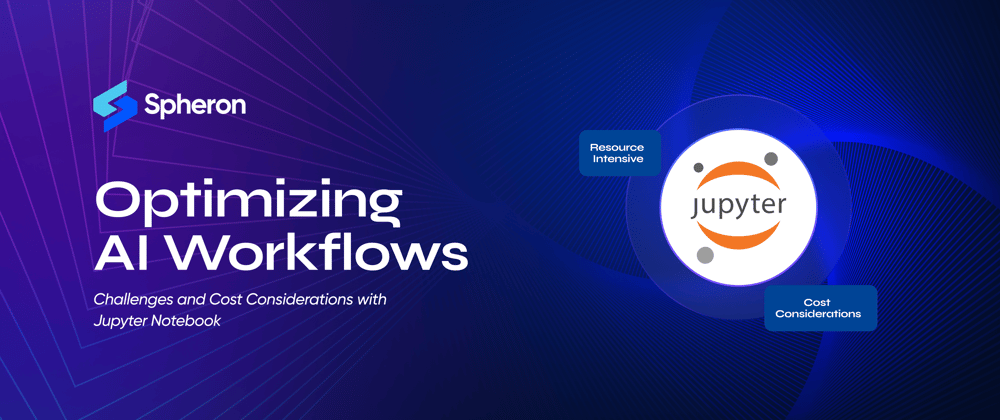In recent years, the field of Artificial Intelligence (AI) has witnessed unprecedented growth, and with it, the popularity of machine learning (ML) has soared. Data scientists, researchers, and analysts increasingly rely on Jupyter Notebook, a powerful tool that allows them to seamlessly write, visualize, and share their code and findings. While Jupyter Notebook is known for its user-friendly interface and versatility, AI engineers encounter various challenges while utilizing it in their daily workflows.
In this blog post, we will explore the common hurdles faced by AI engineers when using Jupyter Notebook and delve into some helpful tips and commercial products that can enhance their productivity and overall experience.
Understanding Jupyter Notebook
Before we dive into the challenges, let's get a quick overview of Jupyter Notebook. Jupyter Notebook is an interactive computing environment that facilitates a combination of code, visualizations, and rich media elements, all within a web-based interface. It allows AI engineers to work with different programming languages, such as Python, R, Julia, and more, making it an attractive choice for diverse data science projects.
Challenges AI Engineers Face with Jupyter Notebook
Resource Intensive
AI tasks often involve complex computations, large datasets, and sophisticated machine learning models. As a result, running these resource-intensive tasks on local machines can be overwhelming for the hardware, leading to slower execution times and potential system crashes. The demands on CPU, memory, and GPU can be substantial, especially for deep learning projects and large-scale data analysis.
In such cases, the processing power of the local machine may not be sufficient, limiting the AI engineer's ability to experiment with more substantial models or extensive datasets. Moreover, resource-intensive tasks can impact the overall productivity of the engineer, as they might need to wait for extended periods for computations to complete.
Cost Considerations
Many AI engineers turn to commercial Jupyter Notebook products and cloud-based solutions to address the resource-intensive nature of AI workloads. While these commercial options offer scalable computing resources and powerful hardware capabilities, they come with associated costs.
Subscription or Usage Fees: Commercial products often require subscriptions or charges based on usage, leading to significant expenses, especially for teams with heavy computational requirements.
Cloud Service Costs: Cloud-based solutions provide powerful resources on a pay-as-you-go basis, but prolonged and intensive usage can accumulate substantial costs.
Storage Charges: Storing large datasets and files on cloud platforms may incur additional expenses.
Data Transfer Costs: Uploading and downloading data to and from cloud instances can result in additional expenses, especially for large datasets.
Reserved Instances: While cloud providers offer cost-saving options like reserved instances, committing to long-term contracts might not be feasible for short-duration workloads.
As AI projects often require iterative development and experimentation, cost considerations become crucial in opting for commercial Jupyter Notebook solutions or relying on local resources.
Cost Comparison b/w cloud-based products
After doing some crazy research, let's examine the cost comparison of some popular commercial Jupyter Notebook products in the market, including Amazon SageMaker, Microsoft Azure Notebooks, and Google Colab.
As you can see above, Ive added Spheron in the comparison; why, though? After doing some research on the tool. I discovered that most of the commercial products cost around the same ~$300 mark. Thats when it hit me why not give Data Scientist another to spin up dockerized version of Jupyter Notebook on Spherons compute marketplace? Spheron has always been at the forefront of optimizing compute costs with decentralization at its core.
If you check the table above, you can easily deduce that when all the other commercial products are costing around ~$300, we have almost reduced the cost by 10x. We not only provide cost optimization but also give features like white labeling your Jupyter Notebook instance, collaboration with the team, and the ability to run other instances on the same dashboard.
Conclusion
When evaluating commercial Jupyter Notebook products, weighing the costs associated with compute instances, storage, data transfers, and any additional services is essential. Each platform has its pricing structure, and the most cost-effective option may vary depending on individual project requirements.
Before making a decision, AI engineers and data scientists should consider conducting a thorough cost analysis based on their expected usage patterns, data sizes, and computational needs. This will enable them to make informed choices and optimize their budget while leveraging the benefits of commercial Jupyter Notebook products.






Top comments (0)